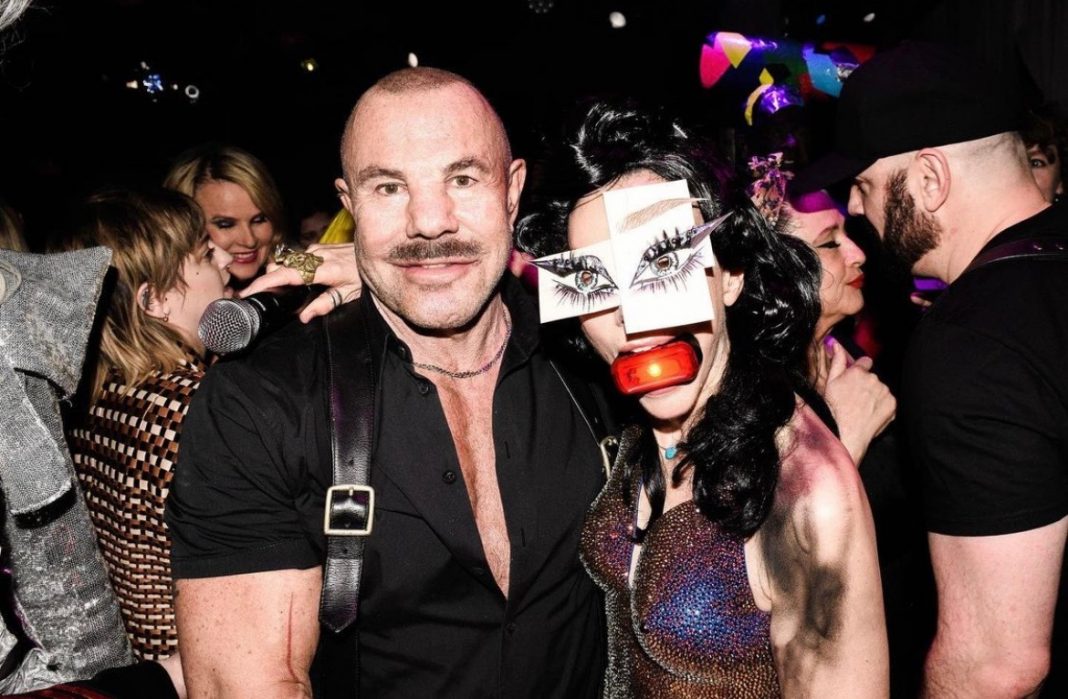On Jan. 24, House of Mugler announced that its visionary Monsieur Manfred Thierry Mugler died of natural causes at his residence in Paris the previous day. Through a resurgence in the fashion designer’s popularity via archival collections and catwalk footage, his pieces currently hold a cult level of hype amongst vintage collectors.
Darrel Creary, a student studying political science and broadcast journalism, emphasized Mugler’s impact.
“I think Mugler’s influence in contemporary design left a strong impact in the fashion industry, from his representation of culture and modern themes to his experimentation with gender expression,” Creary said. “He will long be revered.”
From a young age, Mugler loved to draw. He spent his early years in Strasbourg, France, sketching the sweeping vistas of the metroplitan region. At 14, he joined the corps de Ballet for the Rhin Opera.
As a member of the corp, his appreciation of the dancer’s form excited a passionate inclination for celebrating the shape of the human figure, demonstrated in both graceful and embolded creations. His collections are particularly crafted with veneration for hyperfeminine symbolism and sensual extravagance.
Additionally, by training his eye for movement, dance forwarded Mugler’s taste for creating clothing that mirrored natural phenomena. Despite their organic nature, the influence of elements such as fire and water came with Mugler’s twist of theatrical flair and exhibition of unnatural beauty: unattainable perfection.
Perhaps his significant penchant for an exacting framework was the product of his training in formal interior design. His time at The Strasbourg School of Decorative Arts shaped his vision for combining elegance and radicalism.
Sitting near the German border, the city’s cultural movements blend both French and German design into the architecture of its buildings. The distinctive personality of the city of Strasbourg is a paradox, just like many of the foundations of Mugler’s impressions. Any observer of Mugler’s body of work can treasure the architectural construction of each exacting measurement. Each piece is a monument of precision and holy grail for detail. If architecture served as one of his endeavors, it is no surprise that the twenty four year old Mugler found his home in Paris.
After working as a freelance designer for major fashion houses in Paris, London and Milan, he launched his personal collection “Café de Paris” in 1973. Mugler soon ammassed a dedicated following and the scale of his clothing matched his statement clientale. His muses included actors, models, artists, socialites and rockstars.
In addition to shooting campaigns with traditional models like Naomi Campbell, his repertoire includes iconic looks for legends such as Grace Jones, David Bowie, George Michael, Diana Ross, Madonna and Michael Jackson.
His craftsmanship of Demi Moore’s dress in “An Indecent Proposal” became one of the most famous examples of nineties fashion and established Mugler as a provocative and leading designer in Hollywood.
Adding to this high-profile circle, Mugler included unknown porn stars, dandies, drag queens and reality stars. During the tenure of his career, his well-documented association with the members of these communities accumulated both admiration and controversy in the sphere of haute couture. Mugler was openly gay.
During the height of his popularity, Mugler’s catwalks were electric productions, described as arena-esque environments with dramatic themes that ranged from glittering science fiction to gothic vampire-devil. His gift for the avant garde and confrontation of racism, sexism and ageism made him both the enfant terrible and golden child of Paris fashion week.
His talent for reimagining the glamorous forms of the 1940s into contemporary, broad-shouldered suits demonstrated his countercultural aptitude, best epitomized in his 1995 fall runway show at the Cirque D’Hiver, deemed “The Woodstock of Fashion.” The grand affair featured a performance by James Brown, over three hundred outfits, and an opulent set.
His perfume “Angel” became one of the best sold perfumes of the twentieth century, and Cirque du Soleil’s wondrous costumes are also the result of the Mugler house. His ready to wear and custom creations achieved commercial success and worldwide recognition until his retirement in 2002. He later returned as creative director of his eponymous label in 2013.
Mugler’s garments regained popularity in the last decade. Nowadays, the brand is in traction to familiarize itself with the present generation. Some modern examples include Kim Kardashian’s “wet dress” Metropolitan Gala look and Willow Smith’s ambassadorship as the muse of the rebranded “Angel Muse” perfume.
Moving forward, The House of Mugler will follow its founder’s long and fruitful heritage of bold and unapologetic design. Like one of the radiant stars of his hometown in Alsace, the legacy of the couturier will continue to illuminate the paths of dreamers.
Featured image taken from Instagram @manfredthierrymugler






